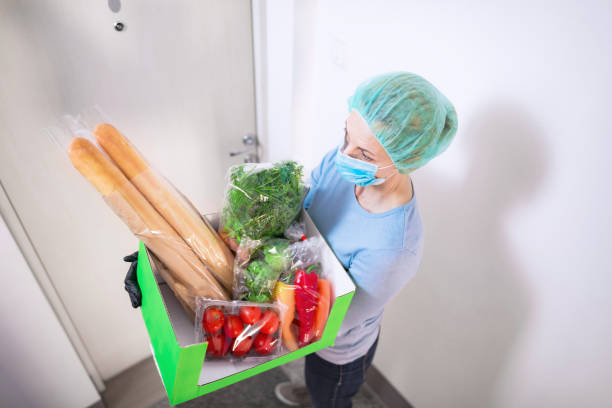
Introduction
Among these very important accomplishments in our day-to-day lives is our safety in food. It plays upon our health in that regard, as it keeps the food we consume from being an agent of harm through contaminants’ accumulation, decomposition, or shabby handling. Here within this article, we are going to identify what is the best way to prevent poor food safety relating to food safety and the measure which you can take to establish safety gains control over your kitchen.
What is Food Safety?
Food safety refers to those conditions and practices that will contribute to preventing food spoilage or contribution to foodborne illness caused by bacteria, viruses, or other causative agents. It has included challenging procedures or methods like washing, preparation, preservation, and processing of food. Therefore, following what we eat food safety standards can help to reduce the effects and incidents that are caused by foodborne diseases that have become a major menace right across the globe.
Why Does Food Safety Matter?
For several reasons, its important to keep good hygiene when handling foods. This, of course, is one of the most important reasons since poor food practices lead to foodborne illnesses. When this parasite is ingested through the consumption of contaminated food, vomiting, nausea, diarrhea, and other diseases may be encountered, especially in the cases of individuals with weakened immunity like children, the elderly, and immunocompromised. Besides, it is worth noticing that food safety contributes to the nutritional value and general quality of food. This is quite important because methods of storing and handling food reduce deterioration and wastage, thus we are able to get the most out of our diets. For restaurants or any food business, it is very important to abide by the necessary standards of food safety to avoid getting blacklisted or getting into legal troubles.
What do you understand by Effulgent’s Essential Food Safety Measures?
Knowing what is the best way to prevent poor food safety, it is necessary to get an idea of the fundamental food safety practices. Here are some key practices that everyone should follow:
Cleanliness:
One of the ways through which food can be prevented from getting infected is by washing all the surfaces. Of course, strict hygiene rules should be followed before preparing a meal; if needed, wash your hands after using the lavatory or after handling raw meat. In your kitchen, always ensure that the surfaces, utensils, and cutting boards are always clean to avoid cross-contamination.
Separate Raw and Cooked Foods:
Do not expose raw foods, especially meats, to ready-to-eat foods that may contaminate. In preparing foods, you should not use the same cutting boards or knives when preparing meats and vegetables, as these are contaminated by bacteria.
Correct Cooking Temperatures:
It is paramount to cook food at correct temperatures that will help eliminate bacteria, which are harmful to our body. Having a food thermometer will help you know if the food is well cooked or not, in case you do not know the ideal temperature. For instance, for chicken, it is said to be cooked at 165 degrees Fahrenheit, and ground beef at 160 degrees Fahrenheit.
Storage:
Store your foods cold since they allow bacteria to grow and ensure that the essential foods that can go bad are kept in the refrigerator or the freezer, and the leftovers should be consumed before reaching their safe time. Raw meat products should be kept away from other food products.
Check Expiry Dates
You should always look at the dates of products such as food before you buy them or even consume them. Consuming foods that have gone bad is dangerous and might result in foodborne illnesses.
What is the Best Way to Prevent Poor Food Safety 360 Training Answers?
However, to build a more protected means of various food ways, most businesses and people go for food safety 360 training. The Food Safety 360 training answers sum up a more extensive glance at food safety. This training includes all the typical practices of food management, including cleanliness, food contamination prevention, and hazard analysis.
Through food safety training, the people acquire the requisite knowledge and attitudes that help them avoid the worst food hygiene practices. For example, in answering what is the best way to prevent poor food safety hygiene when handling foods, training workers on how to maneuver foods, endangered guidelines, and an environment free of germs can be done.
Conclusion
The food safety must be safe so that we are safe from diseases that are caused by foods that we eat. Therefore, knowing what is basic food safety, analyzing why, and overall compliance with cardinal food safety procedures will assure that the meals consumed are healthy and safe. Of course, everyone who cooks at home or professionally can interfere with bacteria and be detrimental to the spoilage of food products.
If you adopt good practices such as washing your dishes and hands, avoiding cross-contamination of food items, getting the right cooking temperatures of foods, proper storing of foods, and checking the date and time of preparation, you can avoid poor food safety and enjoy your delicious and healthy foods. What’s more, the notion that food safety 360 training answers offer one an idea of what to invest in would surely bring much about ideas and solutions toward further improvement in food safety.
About the conclusion, it is only proper and of paramount importance to learn what is the best way to prevent poor food safety is achieved by acquaintance with such important procedures. With strict observance of such precautions, we are guaranteed that we protect ourselves, our families, and society from these dangers of foodborne diseases.







